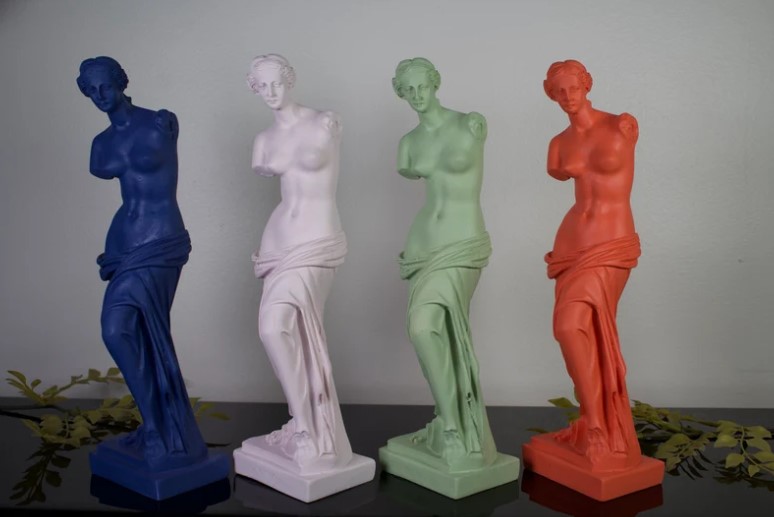
16 Jan Sculptures: Exploring Ancient Statues of the Classical Era
Sculptures have been around since prehistoric times as a way to represent ideas, beliefs, and emotions. They have been used to tell stories, to commemorate events, and to create works of art. Throughout the centuries, sculptures have taken many forms, from reliefs to figurines to full-size statues. One of the most famous eras for sculpture is the Classical era, which is known for its towering, lifelike statues and its influence on artistic styles to come. In this article, we will explore some of the most famous sculptures from this period and the stories behind them.
The Classical era is an important period in art history, as it represents the emergence of some of the most iconic sculptures in history. From iconic Greek sculptures such as the Venus de Milo, to the grandeur of the Parthenon, the Classical era was a time of incredible artistic achievement. In this article, we will explore some of the most iconic Classical era sculptures, and learn more about their history, symbolism, and legacy.
Famous Classical Era Statues
The Venus de Milo
The Venus de Milo is one of the most iconic sculptures of the Classical era. This marble sculpture was created in Greece during the late 2nd century BC, and is believed to depict the Greek goddess Aphrodite. The Venus de Milo is a symbol of beauty and grace, and is renowned for its balanced proportions, as well as its graceful pose.
Date: 2nd century BC
Artist: Unknown
Material: Marble
Iconic Feature: Balanced proportions and graceful pose
The Discobolus of Myron
The Discobolus of Myron is a bronze sculpture that was created in the 5th century BC by the Greek sculptor Myron. The Discobolus depicts a discus thrower in the midst of throwing the discus, and is renowned for its lifelike portrayal of the athlete. The Discobolus is a symbol of athleticism, and is an iconic work of Classical era sculpture.
Date: 5th century BCArtist: MyronMaterial: BronzeIconic Feature: Lifelike portrayal of the athlete
The Laocoön Group
The Laocoön Group is a marble sculpture that was created in the 1st century BC by the Greek sculptors Agesander, Polydorus, and Athenodorus. The Laocoön Group depicts Laocoön and his two sons being attacked by sea serpents, and is renowned for its emotionally powerful portrayal of the scene. The Laocoön Group is a symbol of suffering, and is an iconic work of Classical era sculpture.
Date: 1st century BCArtist: Agesander, Polydorus, and AthenodorusMaterial: MarbleIconic Feature: Emotionally powerful portrayal of the scene
The Parthenon
The Parthenon is a grandiose temple that was built in the 5th century BC in Greece. The Parthenon is renowned for its architectural beauty and grandeur, and is a symbol of the power and glory of the Classical era. The Parthenon is an iconic work of Classical era sculpture, and is a lasting legacy of the Classical era.
Date: 5th century BCArtist: Iktinos and KallikratesMaterial: MarbleIconic Feature: Architectural beauty and grandeur
Types of Classical Era Statues
The Classical era is marked by the emergence of realistic and lifelike sculptures. During this period, sculptors were able to create detailed works of art with a variety of materials, including marble, bronze, and terracotta. Here are some of the most common types of statues from the Classical era:
- Figurines: Small sculptures of humans, animals, or gods. They were often used as religious symbols or decorations.
- Reliefs: Relief sculptures were created by carving an image onto a flat surface. They were often used to tell stories or commemorate events.
- Statues: Lifelike statues of humans, gods, or animals. They were often placed in public places or used to honor important figures.
Conclusion
The Classical era is known for its lifelike sculptures and its influence on later artistic styles. From small figurines to towering statues, these works of art have captivated audiences for centuries. From the iconic Discobolus of Myron to the graceful Venus de Milo, these sculptures are a testament to the skill and creativity of the artists of the Classical era.


